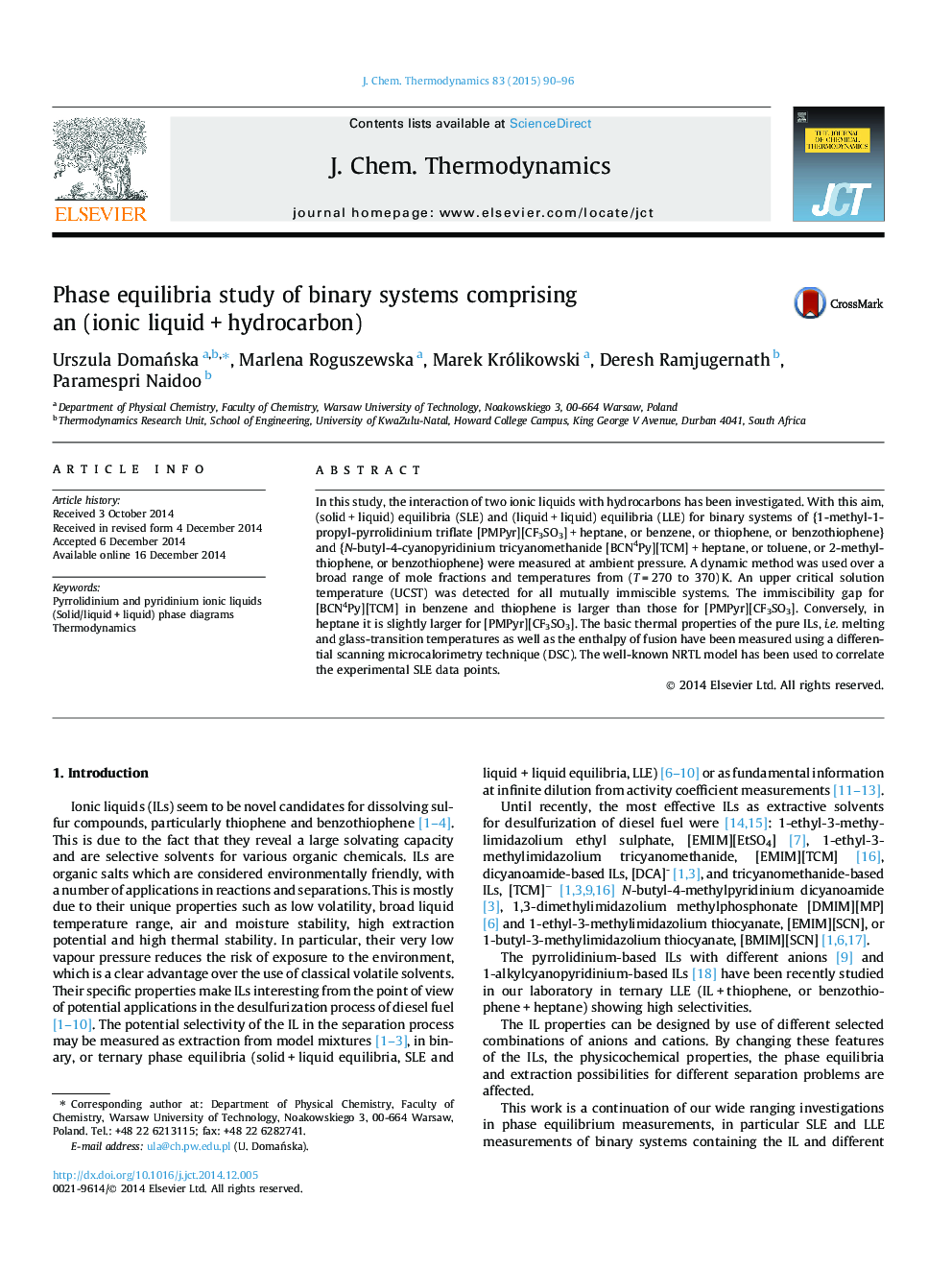| Article ID | Journal | Published Year | Pages | File Type |
|---|---|---|---|---|
| 215235 | The Journal of Chemical Thermodynamics | 2015 | 7 Pages |
•The (solid + liquid) equilibria (SLE) and (liquid + liquid) equilibria (LLE) study.•{[PMPyr][CF3SO3] + heptane, or benzene, or thiophene, or benzothiophene}.•{[BCN4Py][TCM] + heptane, or toluene, or 2-methylthiophene, or benzothiophene}.•Thermodynamic NRTL modelling.•Separation of sulfur compounds from alkanes and aromatics from aliphatics.
In this study, the interaction of two ionic liquids with hydrocarbons has been investigated. With this aim, (solid + liquid) equilibria (SLE) and (liquid + liquid) equilibria (LLE) for binary systems of {1-methyl-1-propyl-pyrrolidinium triflate [PMPyr][CF3SO3] + heptane, or benzene, or thiophene, or benzothiophene} and {N-butyl-4-cyanopyridinium tricyanomethanide [BCN4Py][TCM] + heptane, or toluene, or 2-methylthiophene, or benzothiophene} were measured at ambient pressure. A dynamic method was used over a broad range of mole fractions and temperatures from (T = 270 to 370) K. An upper critical solution temperature (UCST) was detected for all mutually immiscible systems. The immiscibility gap for [BCN4Py][TCM] in benzene and thiophene is larger than those for [PMPyr][CF3SO3]. Conversely, in heptane it is slightly larger for [PMPyr][CF3SO3]. The basic thermal properties of the pure ILs, i.e. melting and glass-transition temperatures as well as the enthalpy of fusion have been measured using a differential scanning microcalorimetry technique (DSC). The well-known NRTL model has been used to correlate the experimental SLE data points.
Graphical abstractFigure optionsDownload full-size imageDownload as PowerPoint slide
